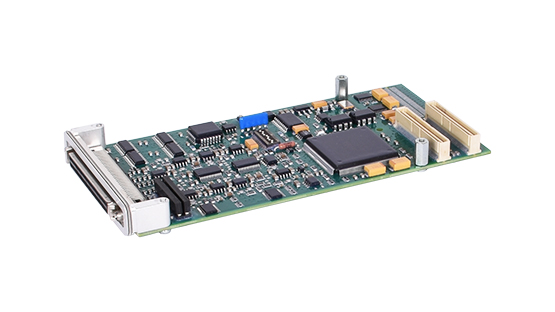
World Of Controls understands the criticality of your requirement and works towards reducing the lead time as much as possible.
DS3820SMTU - Analog I/O Module is available in stock which ships the same day.
DS3820SMTU - Analog I/O Module comes in UNUSED as well as REBUILT condition.
To avail our best deals for DS3820SMTU - Analog I/O Module, contact us and we will get back to you within 24 hours.
SPECIFICATIONS:
Part Number: DS3820SMTU
Manufacturer: General Electric
Series: Mark IV
Product Type: Analog I/O Module
Number of channels: 12
Operating temperature: -30 to 55 degrees Celsius
Size: 8.25 cm high x 4.18 cm
Repair: 3-7 Day
Availability: In Stock
Weight: 2 lbs
Country of Origin: United States
FUNCTIONAL DESCRIPTION:
DS3820SMTU is an Analog I/O Module manufactured and designed by General Electric as part of the Mark IV Series used in GE Speedtronic Gas Turbine Control Systems. An analog I/O module, also known as an analog input/output module or simply an analog module, is a device used in industrial automation and control systems to interface analog signals between the field devices and the control system. It allows the measurement and control of analog signals such as voltage, current, temperature, pressure, and other physical quantities. Analog I/O modules typically consist of analog input channels and analog output channels. The input channels are used to receive analog signals from field devices, while the output channels are used to send analog control signals to actuators or other devices in the field.
FEATURES AND FUNCTIONS OF ANALOG I/O MODULES:
Signal Conversion: Analog I/O modules convert the continuous analog signals into digital format that can be processed by the control system. This conversion is typically done using an analog-to-digital converter (ADC) for input channels and a digital-to-analog converter (DAC) for output channels.
Channel Configuration: Analog I/O modules can have a varying number of input and output channels, depending on the specific model and application requirements. Each channel is usually individually configurable for signal range, resolution, and other parameters.
Signal Conditioning: Analog I/O modules often include built-in signal conditioning features such as amplification, filtering, and isolation. These features help in improving the accuracy and reliability of the measured and controlled signals, as well as protect the control system from potential electrical noise or interference.
Communication interface: Analog I/O modules are designed to connect to the control system using a communication protocol such as Ethernet, Modbus, Profibus, or DeviceNet. This enables the exchange of data between the module and the control system for monitoring and control purposes.
Integration with control software: Analog I/O modules are typically integrated with the control software or programmable logic controllers (PLCs) used in the automation system. The control software can configure the module, read the analog input values, set the output values, and perform other control functions as required.
WOC maintains the largest inventory of Replacement parts for GE Speedtronic control systems. Additionally, we offer warranty-backed unused and rebuilt boards as well as board repairs for your damaged ones. For your OEM needs, our team of professionals is available around the clock. We at WOC are happy to help you with any needs you may have in terms of automation. Please contact our team by phone or email for pricing and availability on any components and repairs.
What is the purpose of an analog I/O module?
An analog I/O module is used to interface analog signals between field devices and the control system in industrial automation and control applications. It enables the measurement and control of analog variables such as voltage, current, temperature, pressure, and more.
Can analog I/O modules handle different signal ranges?
Yes, analog I/O modules typically support configurable signal ranges. Each input and output channel can be configured to accommodate different voltage or current ranges, allowing flexibility to match the requirements of the connected field devices.
How are analog I/O modules connected to the control system?
Analog I/O modules are connected to the control system using a communication interface such as Ethernet, Modbus, Profibus, or DeviceNet. These interfaces allow data exchange between the module and the control system, enabling configuration, data retrieval, and control functions.